Mudras (hand gestures) for Breathing
The Power of Mudras
Did you know that you can use your hands to improve your breathing? Let’s experiment with a few mudras for breathing that can immediately demonstrate their power. They not only affect how we breathe but, also play a key role in bringing stillness to our minds and emotions.
Why Didn’t They Teach Us This at School?
For years, I read how wonderful practicing mudras were. However, I only practiced them every now and again and they weren’t an integral part of my practice. Today, I find their impact so mind-blowing that I can’t imagine not using them to bring balance to my day. The beauty is, mudras can be used anytime, anywhere without drawing much attention.
The Science Behind Mudras
The power that the hands possess in bringing equanimity, in just a few minutes, can be partly explained by Homunculus. Also known as the Little Man, he represents the body based on a neurological “map”. This map cover the areas and proportions of the brain that are dedicated to processing motor and/or sensory functions in different parts of the body. As you can see, the hands take a larger proportion of the brain to be processed, compared to other body parts.
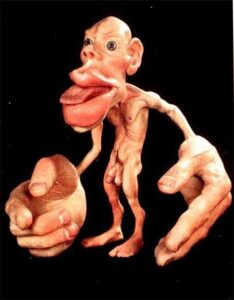
Cultivating Calm to Feel the Effects
The power of mudras can also be attributed to the fact that we must cultivate a relative calm in order to feel their effects. The whole body rests when the storyteller in our head quietens down to listen, instead of constantly adding a narrative. I believe that there is more to scientifically explain how each hand gesture specifically influences different moods, breathing patterns and brain functions but, to me, mudras remains a delightful mystery.
Learning a Couple of Mudras at a Time
There are hundreds of mudras to choose from but, in order to avoid the stress of ‘too many choices’, it is best to learn a few, practice them regularly to deeply understand their impact, before moving on to the rest.
Recommended Mudras for Breathing
For the purpose of this blog, I suggest the practice of the first four mudras (9 breaths each) to feel the sensation of the opening and closing of each breathing chamber separately and then together.
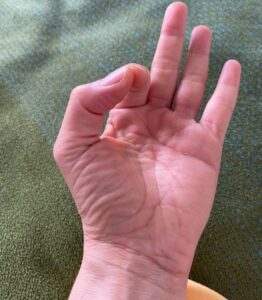
Chin Mudra (Pelvis)
Helps you sense the breath in the lower abdomen / pelvis region.
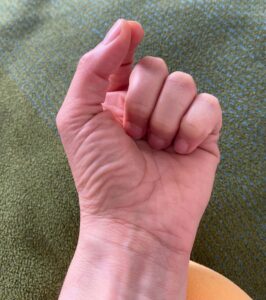
Chinmaya Mudra (Upper Abdomen)
Helps you sense the breath in the middle of the torso / upper abdomen / kidney region.
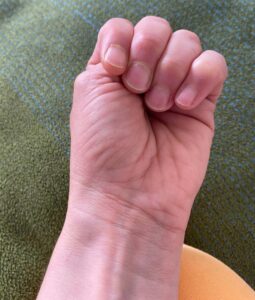
Adhi Mudra (Upper Chest)
Helps you sense the breath in the collar bones, neck / upper chest region.
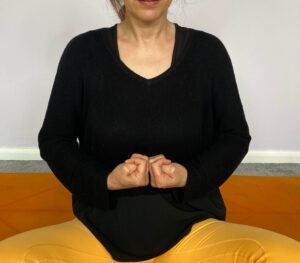
Brahma Mudra (Full Yogic Breath)
Helps you sense all of the above regions resulting in full yogic breath.
Additional Mudras for Specific Needs
These are good mudras to play with too to find out how they influence your brain and nervous system.

Hakini Mudra
Aids memory and is a great tool for when you have forgotten something. Excellent in bringing balance between the left and right hemispheres of the brain ~ bring the tips of all fingers to touch each other.
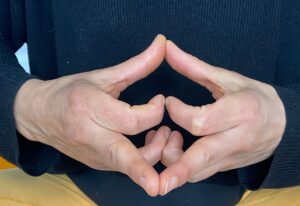
Kalesvara Mudra
It is great to quiet the mind and feelings. It is said that the buddha taught this to his disciples. The nails of the little, ring and index fingers touch each other, the pad of the middle fingers touch forming a diamond (relative to the index fingers) and thumbs touch each other (forming a heart).

Matangi Mudra
It is great to help relax an excited heart. All the fingers cross apart from the middle finger.
I hope you’ll have as much fun with these mudras as I’ve had and if you are interested to learn more I recommend ‘Mudras, Yoga in your Hands‘ by Gestrud Hirschi and ‘Mudras of India‘ by Cain Carroll and Revital Carrol.
You can read more blogs on the mudras, Hridaya Mudra and Khechari Mudra.
Dorna Djenab
June 2024
